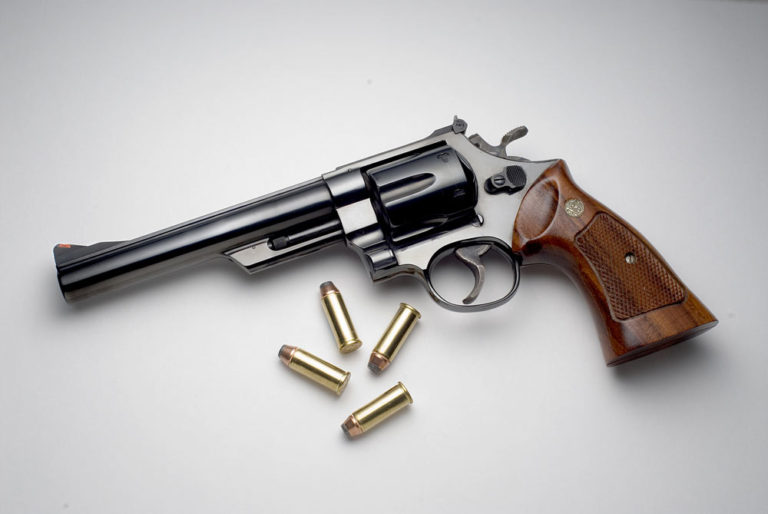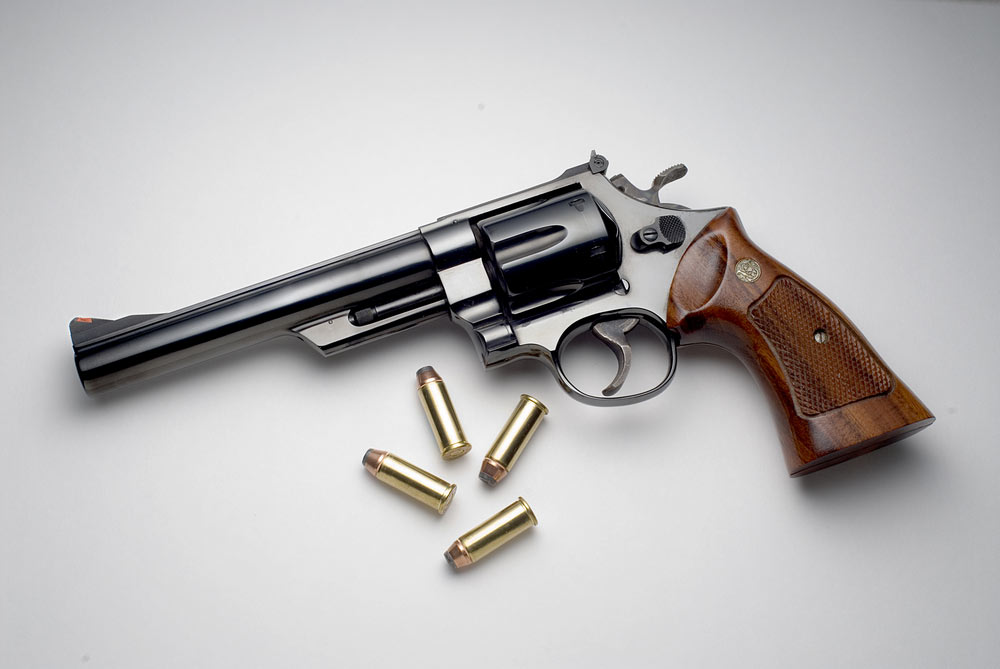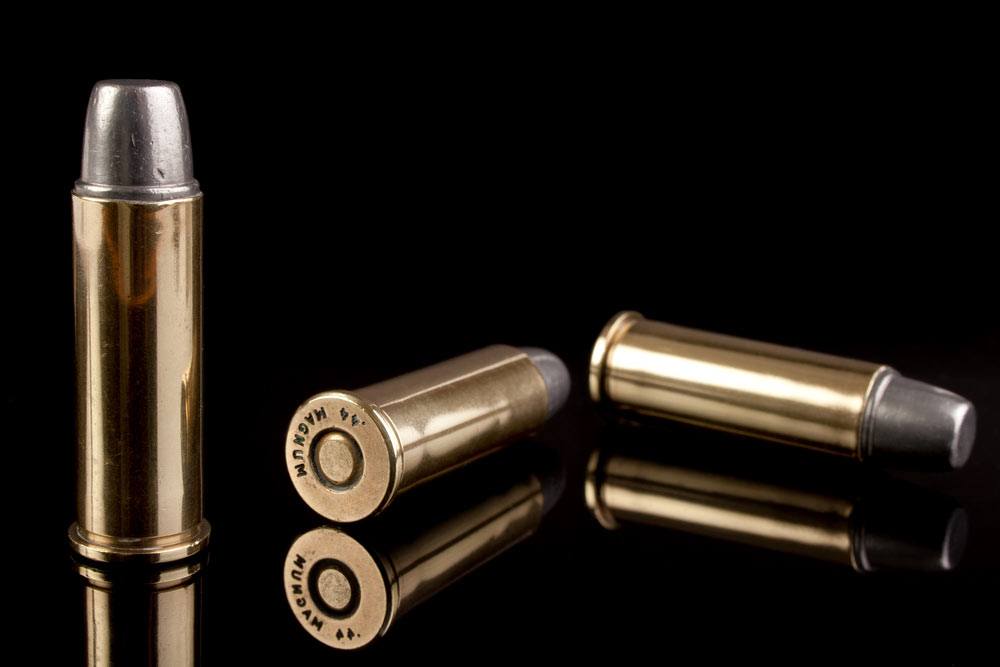

The powerful .44 magnum cartridge, along with a new revolver to chamber it, the Smith & Wesson Model 29, were introduced to the shooting public in 1956. The shooting industry finally legitimized the big .44 after years of handloaders loading up the .44 Special cartridge to handle heavier bullets at increased velocities.
Elmer Keith was a member of the group clamoring for the factories to build on their experiences and to introduce the cartridge and handguns to handle it. Elmer was a well-known and respected outdoor writer and his sermon from that bully pulpit carried a bit more weight with the industry than did the average handloader.
Keith had loaded the .44 Special cartridge substantially heavier than the factory fodder available, for a long time, and proclaimed the improvements in the “improved” round long and loud. Industry finally heeded the message and the first two production S&W Model 29 revolvers went to Julian Hatcher of the American Rifleman and none other than Elmer Keith. Bill Ruger followed suit not long after and introduced a Ruger revolver later in 1956.
As Elmer told the story in his book Keith An Autobiography (Later reworked and republished as Hell, I Was There):
I wanted two things from Remington. I wanted them to factory-load my heavy .44 Special load, and I also wanted a 1-1/4-ounce Magnum 16-bore load that I'd been hand-loading successfully for years. There was no problem whatever on the 16-bore load. Petersen had called the boys all together, and they agreed on it right off the reel. But they were afraid of the old triple-lock Smith & Wesson .44 with my heavy loads. I told them I'd been shooting it for ten to fifteen years in the old gun I'd got from McGivern with no problems what-ever, fine accuracy, no undue pressure. However, they were skeptical of the old gun holding it. So I told them, “Why not make the case one-tenth inch longer and call it a .44 Magnum?” They agreed that would be a good idea.
In the end, Remington agreed to make the ammo, and S&W agreed to wrap a handgun around it, and the .44 Magnum was born.
The cartridge and new revolvers were popular enough after their introductions, but in a quirk of fate, the thing that really lit the flame of desire in many otherwise disinterested shooters was the release of the movie Dirty Harry in 1971 starring Clint Eastwood.
After detective Harry Callahan began singing the praises of the “most powerful handgun” on the screen as well as mowing down the criminal element with his S&W Model 29, the firearms literally flew off the dealers’ shelves. Within a short period of time, it was almost impossible to find a Model 29 anywhere, and in the rare event one could be found, the selling price was well north of the MSRP. The factory couldn't keep up with the orders and I was told were actually rationing Model 29s to their distributor/dealer network.
In order to prevent a shooter from inadvertently stuffing a .44 Magnum round into one of the old revolvers chambered for the .44 Special cartridge, the Magnum case is a bit longer than the Special case, eliminating that potential disaster.

The cartridge is factory loaded to between 1,300 and 1,500 fps depending on the load and bullet weight, and at pressures up to 36,000 psi. So loaded, it is a pretty fair hunting cartridge for a handgun, provided the shooter is experienced and can handle the recoil. It requires considerable practice to master. I was living in Alaska at the time of the height of its popularity, and .44 Magnum chambered revolvers were in great demand for carrying in bear country.
Although designed as a powerful revolver cartridge, it didn't take long after its introduction for manufacturers to come out with handy rifles chambered for the cartridge. Ruger brought out the first one that I'm aware of, a handy little semi-auto rifle. Marlin followed with a lever action rifle not long after, and these days there are quite a few available from several manufacturers.
In the late nineteenth and early twentieth centuries, it was not uncommon for a shooter to carry a sidearm and a handy rifle, both firing the same cartridge. Three such cartridges were the .32-20, .38-40, and 44-40. At one time, I owned a Winchester Model 73 and a Colt Single-Action, both chambered for the .44-40 cartridge. I wish I still had them.

Next Step: Get your FREE Printable Target Pack
Enhance your shooting precision with our 62 MOA Targets, perfect for rifles and handguns. Crafted in collaboration with Storm Tactical for accuracy and versatility.
Subscribe to the Gun Digest email newsletter and get your downloadable target pack sent straight to your inbox. Stay updated with the latest firearms info in the industry.







